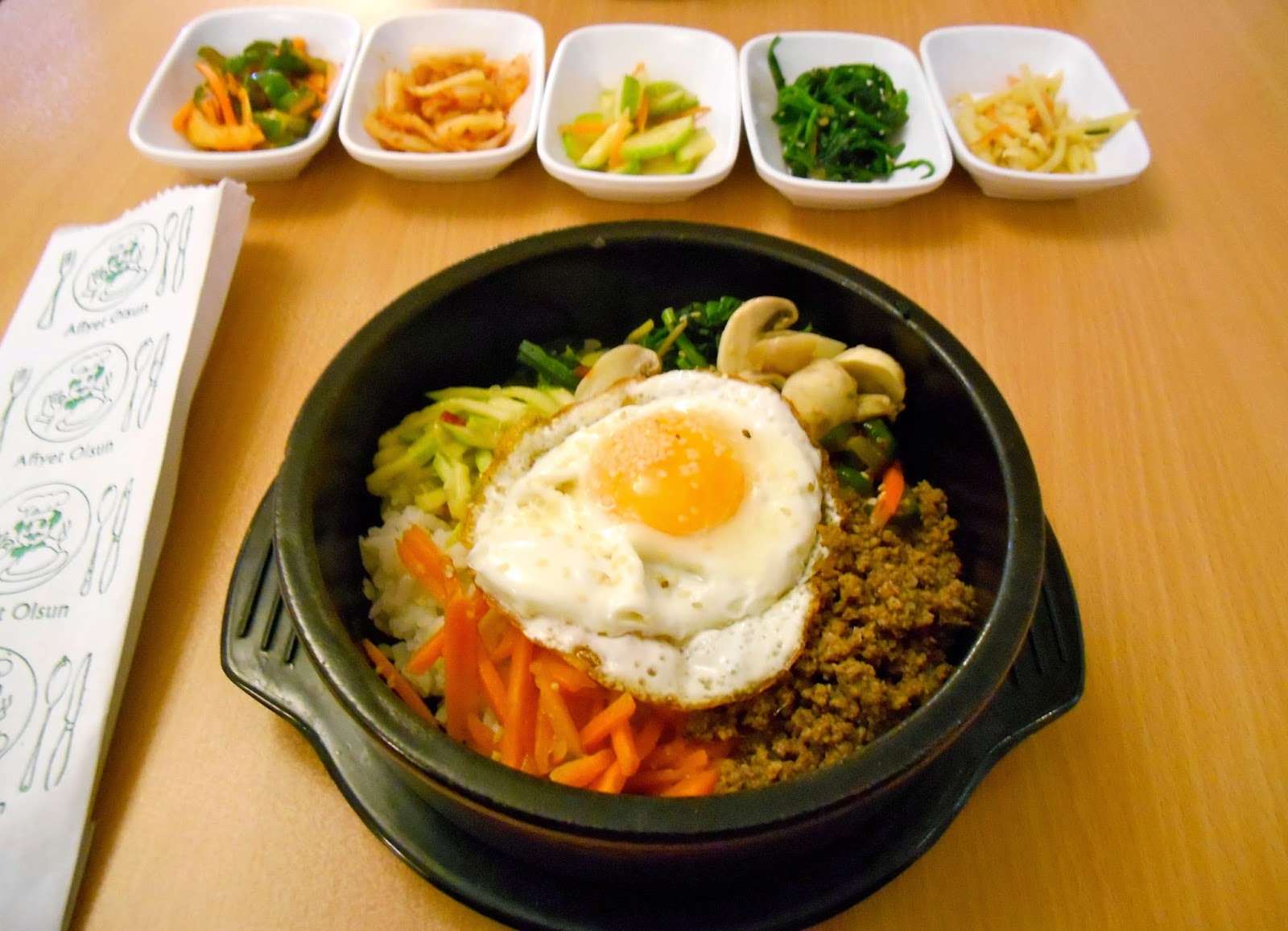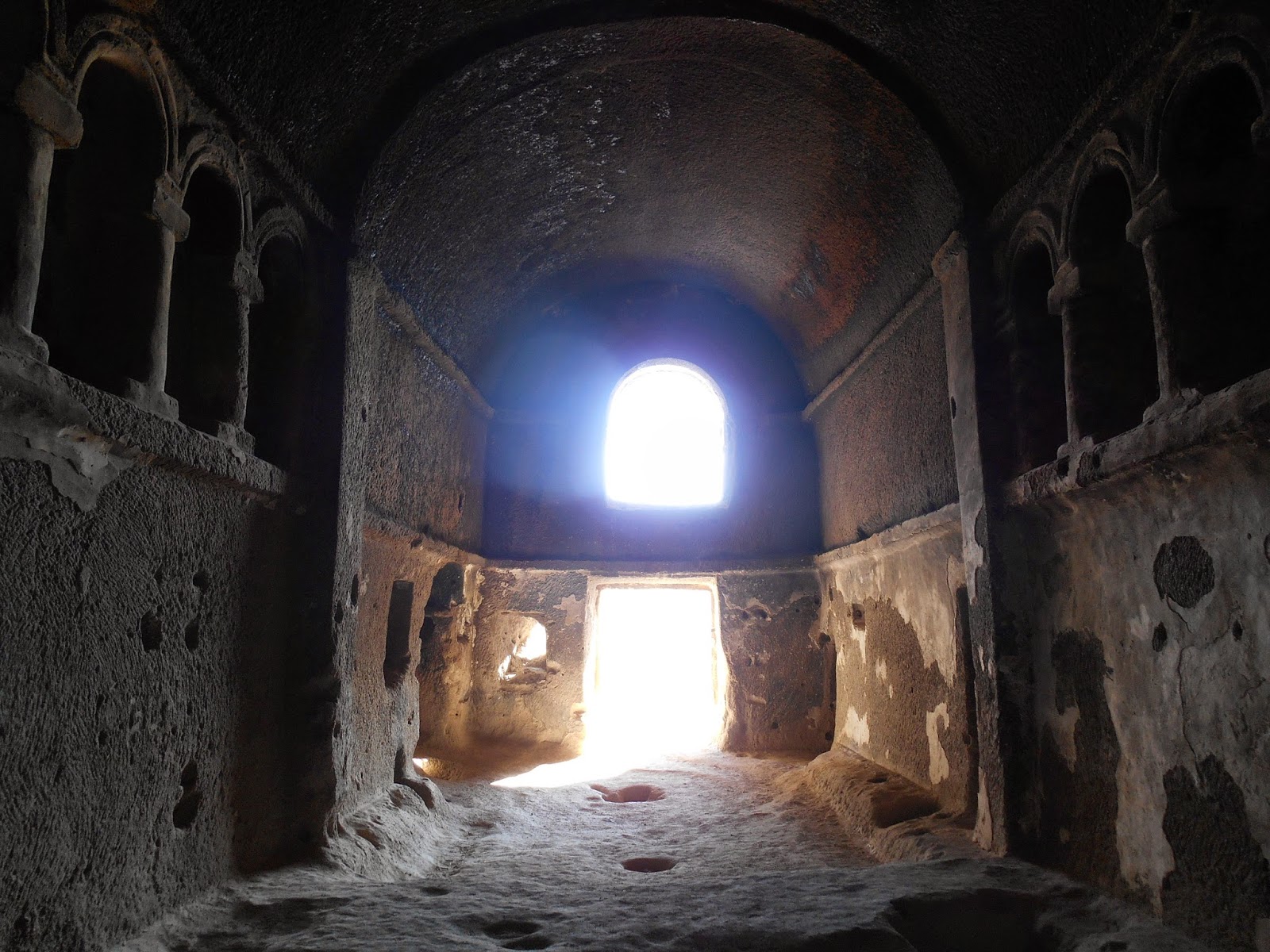I met Charlie in Paris in 2009, back when we were two Michiganders trying to prove to the world (and ourselves) that we were more than just Midwest yokels. After several kilos of cheese, a handful of weekend excursions, and one unspeakably traumatic viewing of “The Antichrist”, we became very close friends.
Nearly six years later, we’ve accepted that we’re Midwest yokels, but our wanderlust remains insatiable. So when Charlie decided to come to Turkey this month, I was overjoyed.
Upon his arrival, Charlie said, “I’m pretty sure Istanbul is the biggest titty I’ve ever seen.”
"What?"
"I tried to say ‘city’ and ‘town’ at the same time, but instead I said ‘titty’. I’m jet lagged. Give me a break.”
I thought ten days in the beautiful titty of Istanbul might be a bit long, so we spent three days in the Cappadocia region in central Turkey.
 |
| Our super cool cave hotel in Goreme |
During his time here, Charlie worked hard to learn Turkish. A fearless polyglot, he spoke his newly acquired language at every opportunity. We were leaving hotel reception after breakfast the first morning when Charlie said, “We have to go now!”
“Why? What happened?”
“I tried to say ‘teşekkürler’ and ‘teşekkür ederim’ at the same time, but instead I said ‘Tushie licker’”
“Oh, god. That is bad. Let’s go, you big tushie-licker.”
 |
The Göreme Open Air Museum
|
We started our first day at the Göreme Open Air Museum, which featured old cave dwellings and about a dozen small chapels.

The word Cappadocia comes from Old Persian meaning “Land of the beautiful horses”. Like most of present day Turkey, the region saw a dozen or so civilizations over thousands of years. According to Wikipedia, the Cappadocian Fathers of the 4th century were integral to much of early Christian philosophy. So there’s that.
 |
| Inside the Dark Church |
There were a few churches in the museum with stunning frescoes, and each was paired with a bundled-up security guard, who said “No photo!” every 30 seconds. Until very recently, I always scowled at people who ignored the no camera rules, but lately I’ve become one of them. The camera on my phone isn’t hurting anything apart from postcard sales.
 |
| Charlie insists this was a table. |
“What do you think that big hole was, Laurel?”
“I don’t know. Maybe a firepit or for food storage.”
“It was definitely a toilet. Definitely.”
“Laurel, lay down in that grave and I’ll take your picture.”
“Okay, but aren’t we just perpetuating the stereotype about Americans being disrespectful tourists?”
“Just do it. I’ll take it really quickly.”
In the end, my massive American derriere didn’t fit in the grave. It's probably for the best.
 |
Uçhisar Castle or "Pride Rock of Cappadocia"
|
 |
On top of Uçhisar Castle
|
 |
Bibimbap!!
|
About 90% of the tourists we ran into during our time in Cappadocia were from South Korea, so it was only fitting that there be several Korean restaurants in the tiny town of Göreme. When we spotted the first one, I begged Charlie to let us eat there and he graciously obliged.
When our food arrived, I told him, “Afiyet olsun!”
“What does that mean?”
“It's Turkish for ‘bon appetit’”.
“Oh, okay. Say it one more time.”
“Afiyet olsun.”
“Ashley Olsen to you as well.”
 |
Pigeon Valley
|
On our second day, we went on a tour which started at Pigeon Valley. It had snowed quite a bit overnight, but it was a sunny day and a balmy 42°F (5.5°C), which is practically t-shirt weather in Michigan.
Next up was the rock-cut Selime Monastery, which was home to Hittite, Assyrian, Persian, Roman, Byzantine, Danişment, Seljuk and Ottoman civilizations. The monastery was built in the 8th and 9th centuries and was eventually used as a stopover point for caravans traveling to nearby bazaars.
It’s said that the Cappadocia region was the inspiration for the Star Wars planet of Tatooine (where Luke Skywalker was raised). It’s easy to see how someone could compare Cappadocia to a planet in a galaxy far, far away. It was a truly magical place.
Later, we visited Derinkuyu, an ancient multi-level underground city which early Christians used to hide from their enemies. In the 7th and 8th centuries BCE, the people were able to carve into the soft volcanic rock to build the underground city. Since then, the rocks have oxidized and hardened.
The city reaches a depth of 60m and was large enough to shelter approximately 20,000 people, along with their livestock! Derinkuyu is connected to other underground cities by miles and miles of tunnels.
It’s believed that the Christians would tie prisoners up by their wrists and interrogate them at this spot in the cave. This poor guy, as the tallest person in our tour group, was forced to reenact a torture scene. He was a good sport about it though.
We were able to visit five of the eight floors of Derinkuyu. Before we made the descent, our tour guide asked if anyone was claustrophobic and for good reason. There were points where you had to turn sideways to fit through a passage and sometimes tunnels got as low as one meter!
Our guide explained that this wasn’t because the early Christians were short, but rather to throw off their pursuers. They even had massive wheels that they would roll to seal off certain passages. It was pretty much real life “Legends of the Hidden Temple”.
Our guide explained that this wasn’t because the early Christians were short, but rather to throw off their pursuers. They even had massive wheels that they would roll to seal off certain passages. It was pretty much real life “Legends of the Hidden Temple”.
We spent the last day of our trip walking around the Rose Valley laughing and talking about everything. We only ran into a handful of people the entire time, which was really nice. There wasn’t anything or anyone to stop us from exploring the long since abandoned cave homes.
It’s amazing how few rules there are at tourist attractions outside of the US. I suppose when getting sued isn’t a huge risk, there’s less concern for guardrails and “Do not enter!” signs. Perhaps the rest of the world is more comfortable letting natural selection take place.
 |
| Hello, Charlie! |
I’m a pretty huge wuss, so it was nice to have Charlie along to trailblaze. He was constantly disappearing into dark tunnels, deep holes, and narrow crevices before I could say, “be careful”. Apparently Charlie doesn't watch as many horror movies as I do.
As ever, I wore the wrong shoes. I didn’t realize until that day that my boots had zero traction. Luckily, Charles “Muscle Man” Ragauss was there to keep me from slipping.
Traveling in Turkey, I’m constantly in awe of humans, nature, and how the two come together. As the saying goes, “When life gives you soft volcanic rock formations, make cave dwellings”.
 |
| My new pose, which is actually a throwback to my 2011 Korea pose.
|
Charlie and I absolutely loved Cappadocia. It was so wonderful to be reunited with my dear friend and to travel together again. Whether we’re seeing a big titty or a little titty, we always have a good time.
































